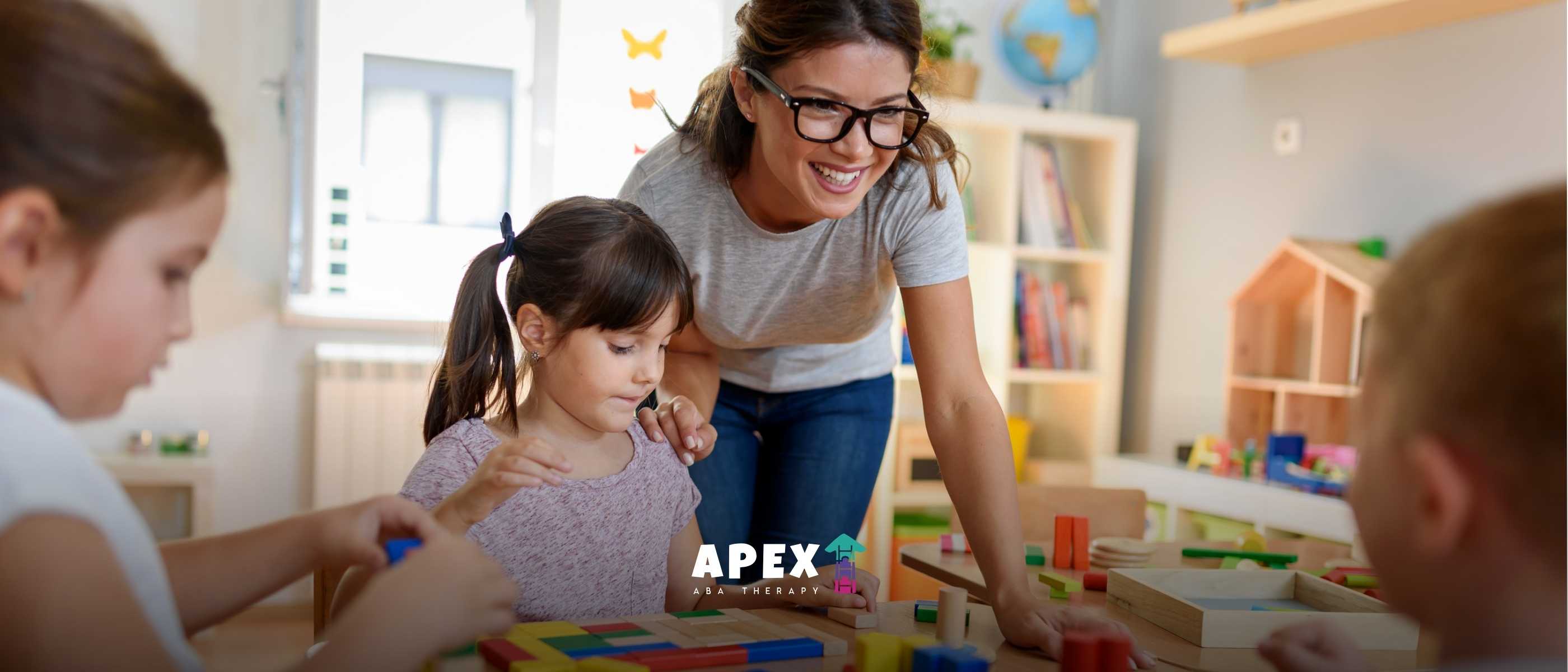Visual Stimming Toys Unveiled
Unleash the therapeutic magic with visual stimming toys! Discover benefits, types, and how to choose the perfect toy for sensory needs.

Visual Stimming Toys Unveiled
Understanding Visual Stimming
Visual stimming is a form of self-stimulation that involves repetitive visual behaviors. It plays a significant role in sensory processing and regulation for individuals with various needs. By understanding the definition and types of visual stimming, we can gain insight into its significance in supporting individuals.
Definition and Significance
Visual stimming, also known as visual self-stimulation, refers to repetitive visual behaviors that individuals engage in to regulate their sensory experiences. These behaviors can include a wide range of actions, such as focusing on specific visual patterns, watching moving objects, or observing the play of light and shadows.
For individuals with sensory processing differences, visual stimming serves as a way to self-soothe, calm anxiety, and increase focus. It can provide sensory input that helps regulate the nervous system and aids in releasing excess energy. Visual stimming can also contribute to visual processing, discrimination, perception, concentration, focus, tracking, color recognition, and awareness [2].
Types of Visual Stimming
Visual stimming behaviors can vary widely among individuals. While some behaviors are more commonly recognized, such as hand flapping or spinning, the range of visual stimming is vast. Examples include rubbing skin, scratching, humming, throat sounds, repetitive thoughts, and chewing nails.
It's important to note that visual stimming is not limited to a specific set of behaviors and can manifest uniquely in each individual. The repetitive visual behaviors exhibited by individuals serve a vital purpose in their self-regulation and emotional well-being.
Understanding the definition and types of visual stimming allows us to appreciate its significance in supporting individuals' sensory needs. By recognizing the value of visual stimming, we can explore the importance of visual stimming toys in providing the necessary sensory input and support for individuals with diverse sensory processing requirements.
Importance of Visual Stimming Toys
Visual stimming toys play a significant role in supporting individuals who benefit from sensory stimulation. These toys provide various benefits and aid in sensory regulation, making them valuable tools for individuals with different sensory needs.
Benefits for Individuals
Visual stimming toys, also known as stim toys, are designed to provide sensory stimulation and help regulate the nervous system. For autistic individuals, stim toys can aid in releasing excess energy, reducing anxiety, and increasing focus [1]. These toys offer a constructive outlet for sensory-seeking behavior, allowing individuals to engage in self-regulation and cope with overwhelming sensory environments.
For individuals with ADHD, stim toys can be particularly beneficial. They provide sensory stimulation that helps regulate sensory-seeking behaviors, allowing individuals to focus, avoid distractions, and release nervous energy in a socially appropriate manner. By incorporating stim toys into their routines, individuals with ADHD can enhance their ability to concentrate and improve their overall attention span.
Stim toys also offer support for individuals with anxiety. These toys provide sensory stimulation that is calming and soothing, helping to regulate the nervous system and reduce feelings of anxiety through tactile and visual distractions. By engaging with stim toys, individuals with anxiety can find comfort and relief in stressful situations, promoting a sense of calmness and reducing anxiety levels.
Role in Sensory Regulation
Sensory aids, such as visual stimming toys, play a crucial role in helping individuals regulate their sensory experiences and emotions. This is especially true for autistic individuals who often face challenges in navigating overwhelming sensory environments. Stim toys provide comfort and focus, allowing individuals to regulate their emotions effectively and prevent meltdowns.
Furthermore, stim toys are essential accessibility aids for autistic individuals. They assist in providing comfort, support, and a sense of familiarity in overwhelming sensory environments [4]. By having access to stim toys, autistic individuals can navigate daily challenges and regulate their emotions more effectively.
In summary, visual stimming toys offer significant benefits for individuals with sensory needs. They provide sensory stimulation, aid in self-regulation, and contribute to emotional well-being. Whether for autistic individuals, those with ADHD, or individuals managing anxiety, stim toys are valuable tools that promote sensory regulation and enhance overall well-being.
Popular Visual Stimming Toys
Visual stimming toys play a significant role in providing therapeutic benefits and sensory regulation for individuals of all ages. These toys are designed to engage and stimulate the visual senses, promoting focus, concentration, and visual processing. Let's take a closer look at the different types of visual stimming toys that are popular among individuals seeking sensory support.
Overview of Available Toys
There is a wide range of visual stimming toys available to cater to various sensory needs and preferences. These toys are designed to encourage visual processing, discrimination, visual perception, concentration, focus, tracking, color recognition, and awareness [2]. Some popular examples include:


These are just a few examples of the visual stimming toys available. The variety of options ensures that individuals can find a toy that suits their specific sensory needs and preferences.
Features and Functions
Visual stimming toys come with a variety of features and functions that enhance their therapeutic benefits. Many of these toys incorporate lights, colors, motion, and interactive elements to engage the visual senses and promote focus and relaxation.
Some common features found in visual stimming toys include:
- LED Lights: LED lights are often used to create vibrant and visually appealing effects. These lights can change colors, flash, or create patterns, capturing the attention and providing a calming visual experience.
- Motion and Movement: Toys that incorporate motion, such as moving lights or flowing bubbles, can captivate the visual senses and promote visual tracking and focus.
- Interactive Elements: Some visual stimming toys offer interactive features, allowing users to manipulate the lights, patterns, or effects. These interactive elements provide a sense of control and engagement.
- Soothing Effects: Many visual stimming toys are designed to create a soothing and calming atmosphere. This can help individuals with sensory sensitivities or anxiety to relax and find comfort.
The features and functions of visual stimming toys are carefully designed to provide visual stimulation and promote sensory regulation. It is important to select toys that align with individual preferences and sensory needs.
By exploring the wide range of visual stimming toys available, individuals can find the ones that best suit their requirements. These toys offer a therapeutic and engaging experience, supporting sensory processing and providing a source of relaxation and comfort.
Visual Stimming for Autism
Visual stimming, also known as self-stimulatory behavior or stimming, plays a significant role in the lives of autistic individuals. Stimming behaviors can encompass a wide range of repetitive movements and actions, such as hand flapping, spinning, rubbing skin, humming, chewing nails, and more [3]. In the context of autism, stim toys have gained recognition for their ability to provide sensory stimulation and aid in regulating the nervous system.
Impact on Autistic Individuals
Autistic individuals often have unique sensory needs due to differences in processing sensory information in the brain compared to neurotypical individuals. This can result in over- or under-reactivity to sensory input, including touch, taste, smell, sound, and visual stimuli. Visual stimming, specifically, can have a profound impact on autistic individuals by providing a means of self-regulation, emotional expression, and sensory modulation.
Stimming behaviors, including visual stimming, serve various purposes for autistic individuals. They can help reduce anxiety, provide comfort, and assist in managing overwhelming sensory input. Engaging in visual stimming activities allows individuals to focus their attention, release excess energy, and find a sense of calm and emotional stability [1]. It is important to recognize that stimming behaviors, including visual stimming, are not negative or problematic but rather serve as essential coping mechanisms for autistic individuals.
Sensory Needs and Stimming
The sensory needs of autistic individuals are best addressed through sensory aids, such as stim toys. These toys are specifically designed to provide sensory stimulation and assist in regulating the nervous system. Stim toys can offer a calming or stimulating effect on the sensory system, helping to reduce stress, anxiety, and improve overall well-being.
Visual stimming toys, in particular, cater to the sensory needs of autistic individuals by offering visual stimulation. These toys often feature visually engaging elements such as spinning lights, colorful patterns, or moving objects. By providing captivating visual input, these toys can help redirect attention, increase focus, and promote a sense of relaxation and control.
It is essential to understand that stim toys, including visual stimming toys, should be viewed as vital sensory aids for autistic individuals. Removing or restricting access to these tools can lead to distress, meltdowns, and harm to an individual's mental well-being. Recognizing the importance of these tools and creating supportive environments that embrace and accommodate stimming behaviors can greatly enhance the quality of life for autistic individuals.
Visual Stimming for ADHD and Anxiety
Visual stimming toys can be beneficial for individuals with ADHD and anxiety, providing them with sensory stimulation that helps regulate their sensory needs and promote a sense of calm. These toys offer unique features and functions that cater to the specific needs of individuals with ADHD and anxiety.
Support for Individuals with ADHD
For individuals with ADHD, visual stimming toys can play a crucial role in providing sensory stimulation to regulate sensory-seeking behavior. These toys help individuals focus, avoid distractions, and release nervous energy in a socially appropriate manner. By engaging with visual stimming toys, individuals with ADHD can redirect their attention and improve concentration on tasks or activities.
Visual stimming toys, such as fidget spinners or liquid motion timers, offer a tactile and visual distraction that helps individuals with ADHD stay engaged and focused. The repetitive movements or actions provided by these toys can enhance concentration and attention, providing a non-disruptive outlet for excess energy or restlessness.
Calming Effects on Anxiety
Individuals with anxiety can find relief and comfort through the use of visual stimming toys. These toys offer sensory stimulation that is calming and soothing, helping to regulate the nervous system and reduce feelings of anxiety. The tactile and visual distractions provided by these toys serve as a self-soothing tool, aiding individuals in coping with anxiety, stress, or emotional dysregulation [1].
When individuals experience sensory overload due to anxiety, visual stimming toys can help provide a controlled and predictable sensory experience. This controlled sensory input offers a calming effect and serves as a grounding tool, helping individuals feel more in control and less overwhelmed by their sensory environment.
By incorporating visual stimming toys into their daily routines, individuals with ADHD and anxiety can benefit from the sensory regulation and calming effects these toys provide. It's important to note that the effectiveness of visual stimming toys may vary for each individual, and it's essential to find the right toy that suits their specific needs and preferences.
Choosing the Right Visual Stimming Toy
When selecting a visual stimming toy, it's important to consider various factors to ensure that it meets the individual's specific needs. Here are some considerations to keep in mind when choosing the right visual stimming toy:
Considerations for Selection
- Sensory Preferences: Understand the individual's sensory preferences. Some individuals may be drawn to toys with bright lights, while others may prefer toys with more subtle visual effects. Consider their specific sensory needs and preferences when selecting a visual stimming toy.
- Safety and Durability: Prioritize safety and durability when choosing a toy. Ensure that the toy is made from non-toxic materials and does not have any small parts that could pose a choking hazard. Opt for toys that are well-constructed and can withstand repeated use.
- Variety of Visual Effects: Look for toys that offer a variety of visual effects. This can include toys with changing colors, moving patterns, or different light intensities. The more variety the toy offers, the more engaging and stimulating it can be for the individual.
- Portable and Convenient: Consider the portability and convenience of the toy. Choose a toy that is easy to carry and can be taken along to different environments. This allows the individual to have their stimming toy readily available whenever they need it.
Creating Supportive Environments
In addition to selecting the right visual stimming toy, it's essential to create supportive environments for individuals who benefit from visual stimming. Here are some tips for creating such environments:
- Designated Spaces: Set up designated areas where the individual can engage with their visual stimming toy comfortably. This can be a quiet corner of a room or a designated sensory space. Ensure that the environment is calm, organized, and free from excessive sensory stimuli.
- Personalized Setup: Tailor the environment to the individual's preferences. Some individuals may prefer dim lighting, while others may find certain colors or patterns soothing. Consider incorporating elements that align with their sensory needs and provide a calming atmosphere.
- Routine and Predictability: Establish a consistent routine to help the individual feel secure and comfortable in their environment. Consistency and predictability can contribute to a sense of stability and reduce anxiety. Incorporate visual stimming activities into the daily routine to promote sensory regulation.
- Open Communication: Maintain open communication with the individual to understand their sensory needs and preferences. Actively listen to their feedback and make adjustments to the environment as needed. Encourage self-advocacy and empower the individual to express their needs and preferences.
By considering these factors and creating supportive environments, individuals can benefit from visual stimming toys in a way that promotes sensory regulation, comfort, and emotional well-being. Remember to prioritize the individual's needs and preferences when selecting a visual stimming toy, and create an environment that supports their unique sensory requirements.
References
- https://www.theyarethefuture.co.uk/stim-toys-autism/
- https://specialneedstoys.com/usa/visual
- https://www.quora.com/Autistic-people-What-is-the-most-unusual-stimming-method-you-have-used
- https://www.thearticulateautistic.com/no-more-stim-toys-what-it-feels-like-for-an-autistic-person-when-you-take-away-our-sensory-aids/
- https://www.quora.com/How-do-fidget-toys-benefit-individuals-with-sensory-modulation-difficulties
Frequently Asked Questions

Can a Child Have Autism and Still Talk Normally?
Can a Child Have Autism and Still Talk Normally?

What Are the Red Flags for Autism in a 2-Year-Old?
Autism Red Flags in 2-Year-Old Children | Apex ABA

Is Autism a Lifelong Condition?
Is Autism a Lifelong Condition? Understanding The Journey

What is the Difference Between Autism and Sensory Processing Disorder?
Autism vs Sensory Processing Disorder Differences | Apex ABA

What's the Difference Between Autism and Speech Delay?
Autism vs Speech Delay & Key Differences Explained | Apex

ABA Therapy Enhancing Social Skills: A Key to Improved Communication and Interaction for Children with Autism
How ABA Therapy Helps Children Build Social Skills

Misconceptions About ABA Therapy: Clearing Up the Myths
Common Misconceptions About ABA Therapy |Apex ABA.

Best Age to Start ABA Therapy & What Parents Should Know
Best Age to Begin ABA Therapy for Children | Apex ABA

What’s the Difference Between High-Functioning Autism and Asperger’s?
Difference Between High-Functioning Autism and Asperger’s

ABA Therapy in North Carolina: A Complete Guide for Families
Learn everything about ABA therapy in North Carolina, including services, costs, insurance coverage, and how to choose the best ABA provider in North Carolina.

Life-Changing ABA Therapy Case Studies You Need to Know
Real Success Stories from ABA Therapy Journeys | Apex ABA

What Does It Mean to Be “On the Spectrum”?
What Does It Mean to Be on the Autism Spectrum? | Apex ABA

Is Autism a Mental Illness or a Developmental Disorder?
Mental Illness or Developmental Disorder Explained

Can Children “Outgrow” Autism?
Can Children Outgrow Autism? Understanding the Facts

Is Autism More Common in Boys Than Girls?
Autism in Boys vs Girls: What the Research Reveals

Understanding the Power of Functional Behavior Assessment ABA
Effective ABA Techniques for Behavioral Intervention

Discover How ABA Helps ADHD in Your Child’s Life
How ABA Therapy Helps Children with ADHD | Apex ABA

ABA Therapy vs Preschool: Making the Right Choice Explained
Learn the key differences between ABA therapy and preschool to help you choose the best option for supporting your child’s early learning and development.

Which Personality Type Is Most Likely to Be Autistic?
Which Personality Type Is Most Likely to Be Autistic? | Apex ABA

Why Consistency Matters: What Happens If ABA Therapy Ends Prematurely
What Happens If ABA Therapy Is Stopped Too Early? | Apex ABA

How Can You Gain an Autistic Person’s Attention? Tips for Meaningful Connection
How Can You Gain an Autistic Person’s Attention?

Sensory Sensitivity and Sixth Sense: What Autism Research Shows
Do Autistic People Have Sixth Sense? | Apex ABA

What Happens If Autism Is Left Untreated?
Can Autism Get Worse If Untreated? | Apex ABA

What Not To Do With An Autistic Child: Avoid These 10 Mistakes
What Not To Do With An Autistic Child? | Apex ABA

Coping with Regressive Autism: Tips for Parents
What is Regressive Autism? | Apex ABA

Do Autistic Kids Live with Parents Forever? Here’s the Reality
Do autistic kids live with parents forever? Discover the facts about independence and living arrangements in autism with expert-backed insights.

Red Flags in ABA Therapy: What Parents Must Watch For
What are the red flags in ABA therapy? Learn to identify warning signs for safe, effective autism treatment in this blog.

Can You Go from Level 3 Autism to Level 1? Is It Possible?
Can you go from level 3 autism to level 1? Learn about progress, therapy, and support options with expert help from Apex ABA.

Autism vs Introversion: How to Tell the Difference
Is it autism or just introversion? Learn the key differences and signs with expert insights from Apex ABA.

ABA for Managing Transitions: Tips to Ease Change for Kids
Learn how ABA for managing transitions helps children with autism handle change smoothly.

Understanding the 7 Dimensions of ABA for Better Outcomes
Discover the 7 Dimensions of ABA and how they can lead to better outcomes.

5 Unique Autistic Love Languages You Should Know About
Discover the 5 unique autistic love languages that can enhance your relationships.

Transforming Futures: Improving Lives of Kids with Autism
Discover how innovative strategies are focused on improving lives of kids with autism.

ABA Therapy Techniques for Addressing Repetitive Behaviors in Autism
Harnessing ABA Strategies to Tackle Repetitive Behaviors in Autism

The Role of ABA Therapy in Enhancing Communication Skills
Transforming Communication for Children with Autism Through ABA Therapy

How ABA Therapy Supports Effective Communication in Nonverbal Children
Unlocking Speech Through ABA: Transformative Paths for Nonverbal Children

How to Help Your Child Transfer Skills Learned in ABA Therapy to Real Life
Unlocking Real-World Success for Children in ABA Therapy

How ABA Therapy Helps Children Develop Better Organizational Skills
Empowering Children with ABA Therapy for Enhanced Organizational Skills

The Importance of Creating a Structured Routine in ABA Therapy
How Structured Routines Transform ABA Therapy for Autism

The Role of ABA Therapy in Developing Conflict Resolution Skills
How ABA Therapy Transforms Conflict Resolution Competence

The Importance of Generalization in ABA Therapy for Autism
Unraveling the Role of Generalization in Enhancing ABA Therapy Outcomes

Why ABA Therapy is Crucial for Parents of Children with Autism
The Transformative Impact of ABA Therapy on Families with Autistic Children

How to Involve Parents in the ABA Therapy Process
Maximize Parent Engagement in ABA Therapy for Better Outcomes

What are the Core Principles of ABA Therapy?
Exploring the Cornerstones of Applied Behavior Analysis

Why Communication is Key in ABA Therapy for Autism
The Crucial Role of Communication in ABA Therapy for Autism

Why ABA Therapy Works for Children with Autism Regardless of Severity
Effective ABA Interventions for All Levels of Autism

Why It’s Important to Maintain a Balanced Approach to ABA Therapy
Balancing Effectiveness and Ethics in ABA Therapy

The Role of ABA Therapy in Developing Adaptive Behavior Skills
Exploring How ABA Therapy Transforms Lives

The Benefits of Combining ABA Therapy with Speech Therapy
Maximizing Development with Integrated Therapy Approaches

What to Expect During an ABA Therapy Session
Demystifying ABA Therapy Sessions: A Comprehensive Overview

How ABA Therapy Enhances Cognitive Functioning in Children with Autism
Exploring the Influence of Applied Behavior Analysis on Autism Cognition

How ABA Therapy Helps Children with Autism with Transitions Between Activities
Easing Transitions for Children with Autism: The Role of ABA Therapy

How to Foster Cooperation Between Parents and Therapists in ABA Therapy
Building Effective Partnerships in ABA Therapy

The Role of Positive Reinforcement in ABA Therapy
Exploring the Impact of Positive Reinforcement in Modern ABA Therapy

Why ABA Therapy is Effective for Children of All Ages
Understanding the Reach and Impact of ABA Therapy Across Age Groups

How to Support Your Child’s Emotional Growth with ABA Therapy
Harnessing ABA Therapy for Enhancing Emotional Development in Children with Autism

The Role of ABA Therapy in Enhancing Peer Relationships for Children with Autism
Harnessing ABA Therapy to Boost Social Connections Among Autistic Children

How to Overcome Common Challenges in ABA Therapy
Navigating Hurdles in ABA Therapy: Strategies and Solutions

How to Manage Behavioral Expectations with ABA Therapy
Understanding Applied Behavior Analysis in Behavioral Management

How ABA Therapy Promotes Emotional Regulation in Children with Autism
Unlocking Emotional Balance: ABA Therapy's Role in Autism

How ABA Therapy Improves Social Skills in Children with Autism
Harnessing ABA Therapy to Enhance Social Competency in Autistic Children

The Role of ABA Therapy in Classroom Success for Children with Autism
Harnessing ABA for Academic and Social Growth in Autism

The Importance of Evaluating and Revising ABA Therapy Goals Regularly
Regular Evaluations: The Cornerstone of ABA Therapy Success

How to Choose the Right ABA Therapy Program for Your Child
Finding the Perfect ABA Therapy Fit for Your Child

The Role of Behavior Analysts in Implementing ABA Therapy
Understanding the Vital Contributions of Behavior Analysts in ABA Therapy

The Role of RBTs (Registered Behavior Technicians) in ABA Therapy
A Closer Look at the Essential Work of RBTs in ABA Therapy

What Makes ABA Therapy Effective for Different Learning Styles?
Unraveling the Flexibility and Effectiveness of ABA Therapy

Understanding the Importance of Data Collection in ABA Therapy
The Role of Data in Shaping Effective ABA Therapy

How ABA Therapy Helps with Toilet Training in Children with Autism
Unlocking Independence: ABA's Role in Autism Toilet Training

The Importance of Encouraging Natural Play in ABA Therapy
Revolutionizing ABA Therapy with Natural Play

How to Make the Most of ABA Therapy at Home
Enhancing ABA Therapy Practices Within Your Home

How to Make ABA Therapy Fun and Engaging for Children with Autism
Transforming ABA Therapy into a Fun Learning Journey

The Role of ABA Therapy in Addressing Verbal and Nonverbal Communication in Autism
Enhancing Communication Skills in Autism Through ABA Therapy

Understanding the Role of Family in ABA Therapy for Autism
The Crucial Impact of Family Engagement in Autism Therapy

How to Handle Setbacks and Challenges in ABA Therapy
Navigating Difficulties and Setbacks in ABA Therapy for Children

How ABA Therapy Can Help Children Build Stronger Relationships with Peers
Unpacking the Influence of ABA Therapy on Peer Relationships in Children

Understanding the Concept of Shaping in ABA Therapy
Demystifying Shaping Techniques in Applied Behavior Analysis

How ABA Therapy Enhances Independent Living Skills in Autism
Unlocking Independence: The Role of ABA Therapy in Autism
.jpg)
90+ Reading Statistics, Facts and Demographics
In this article, we will dive into 60 reading statistics that shed light on the importance of reading and its impact on different aspects of life.

How ABA Therapy Can Help Children with Autism Make Better Choices
Unlocking Autistic Children's Potential with ABA Therapy

How ABA Therapy Helps Children with Autism Adapt to New Environments
The Adaptive Benefits of ABA Therapy for Autism

What Does the Research Say About the Effectiveness of ABA Therapy?
Exploring the Role and Research Behind ABA Therapy

How to Create an Effective ABA Therapy Plan for Your Child
Guiding Parents Through Effective ABA Therapy Planning

The Long-Term Benefits of Consistent ABA Therapy for Children with Autism
Unlocking Potential: Consistent ABA Therapy for Autism

Why ABA Therapy Should Be Tailored to Each Child’s Unique Needs
The Necessity of Customizing ABA Therapy for Unique Child Development

What are the Different Types of ABA Therapy?
Exploring the Varieties of ABA Therapy for Autism and Beyond

How ABA Therapy Can Improve Functional Skills in Children with Autism
Unlocking the Potential: ABA Therapy for Autistic Children

How ABA Therapy Facilitates Peer Interaction for Children with Autism
Understanding the Impact of ABA Therapy on Autism and Peer Relationships

The Importance of Early Intervention in Autism Therapy
Unlocking Potential: The Crucial Role of Early Intervention in Autism

The Role of ABA Therapy in Creating Healthy Habits for Children with Autism
Understanding How ABA Therapy Shapes Daily Life for Autistic Children

How to Create a Supportive Environment for Children Undergoing ABA Therapy
Crafting a Nurturing Space for Effective ABA Therapy

The Benefits of Incorporating Technology into ABA Therapy
Harnessing Technology for Enhanced ABA Therapy Outcomes

How ABA Therapy Helps with Stereotypic Behavior in Autism
ABA Therapy: Transforming Stereotypic Behaviors into Meaningful Interactions in Autism

What to Expect in an ABA Therapy Program for Children with Autism
Understanding ABA Therapy for Kids with Autism

How to Create a Positive Home Environment for Children Under ABA Therapy
Cultivating a Therapeutic Space for ABA Success

How ABA Therapy Can Improve Safety Awareness in Children with Autism
Empowering Safety through ABA Therapy for Kids with Autism

The Link Between ABA Therapy and Improved Academic Performance in Children with Autism
Exploring the Profound Impact of ABA on Autism-Related Educational Success

The Benefits of Early ABA Intervention for Toddlers with Autism
Unveiling the Power of ABA for Toddlers with Autism

How ABA Therapy Promotes Independence and Life Skills Development
Unlocking Independence: The Role of ABA Therapy in Life Skills Development

How to Deal with the Emotional Impact of ABA Therapy on Parents
Navigating Emotions: Support Tips for Parents in ABA Therapy



